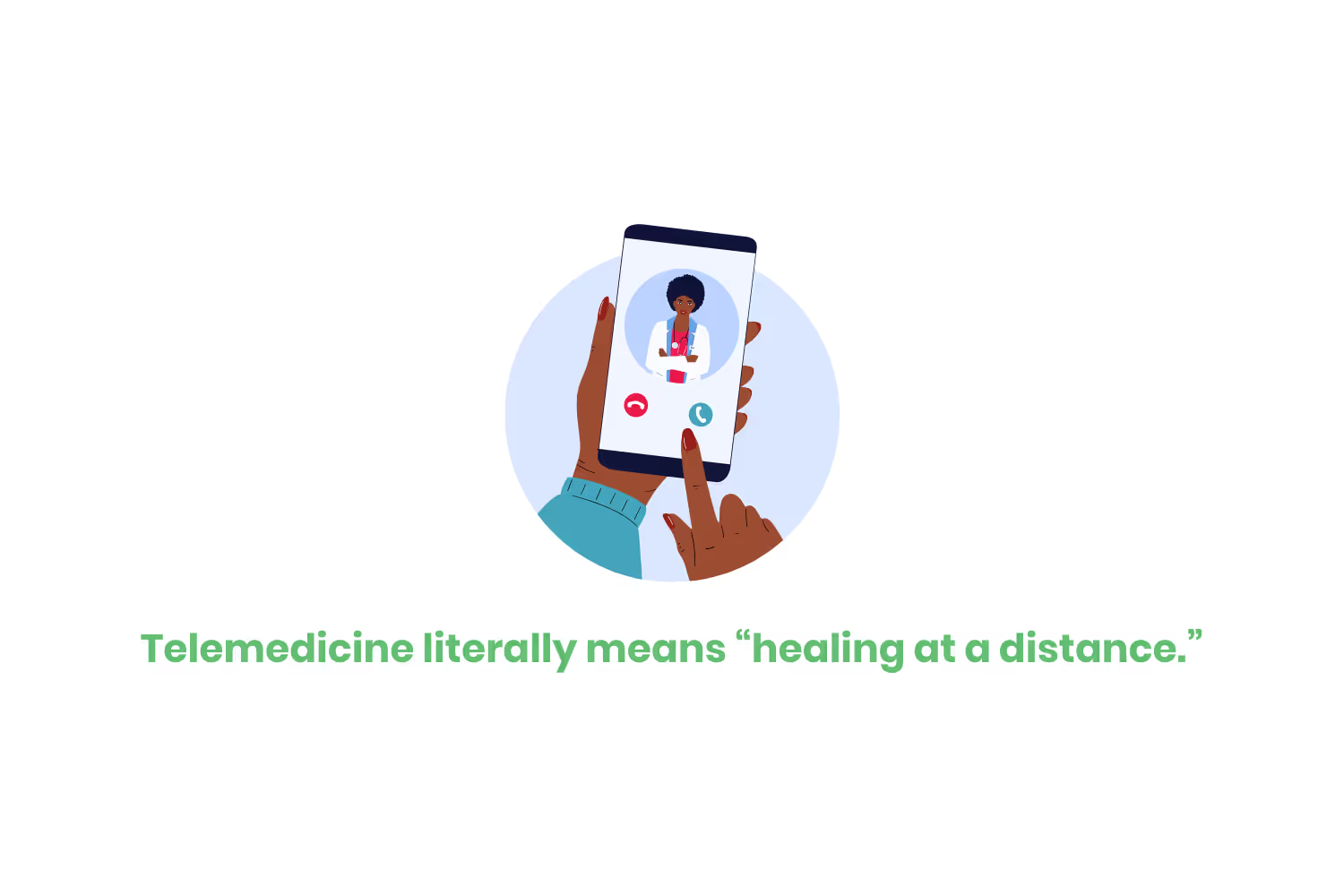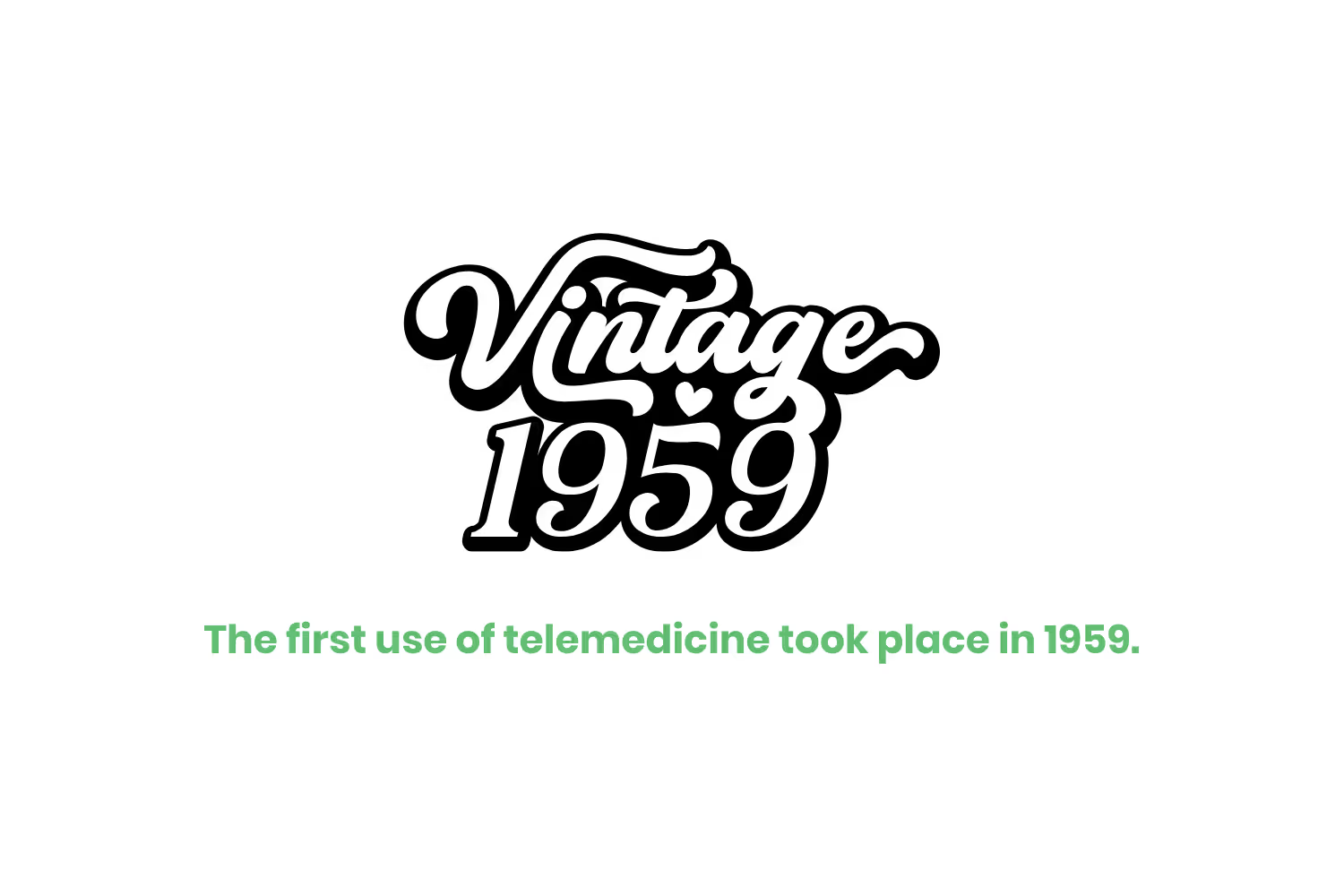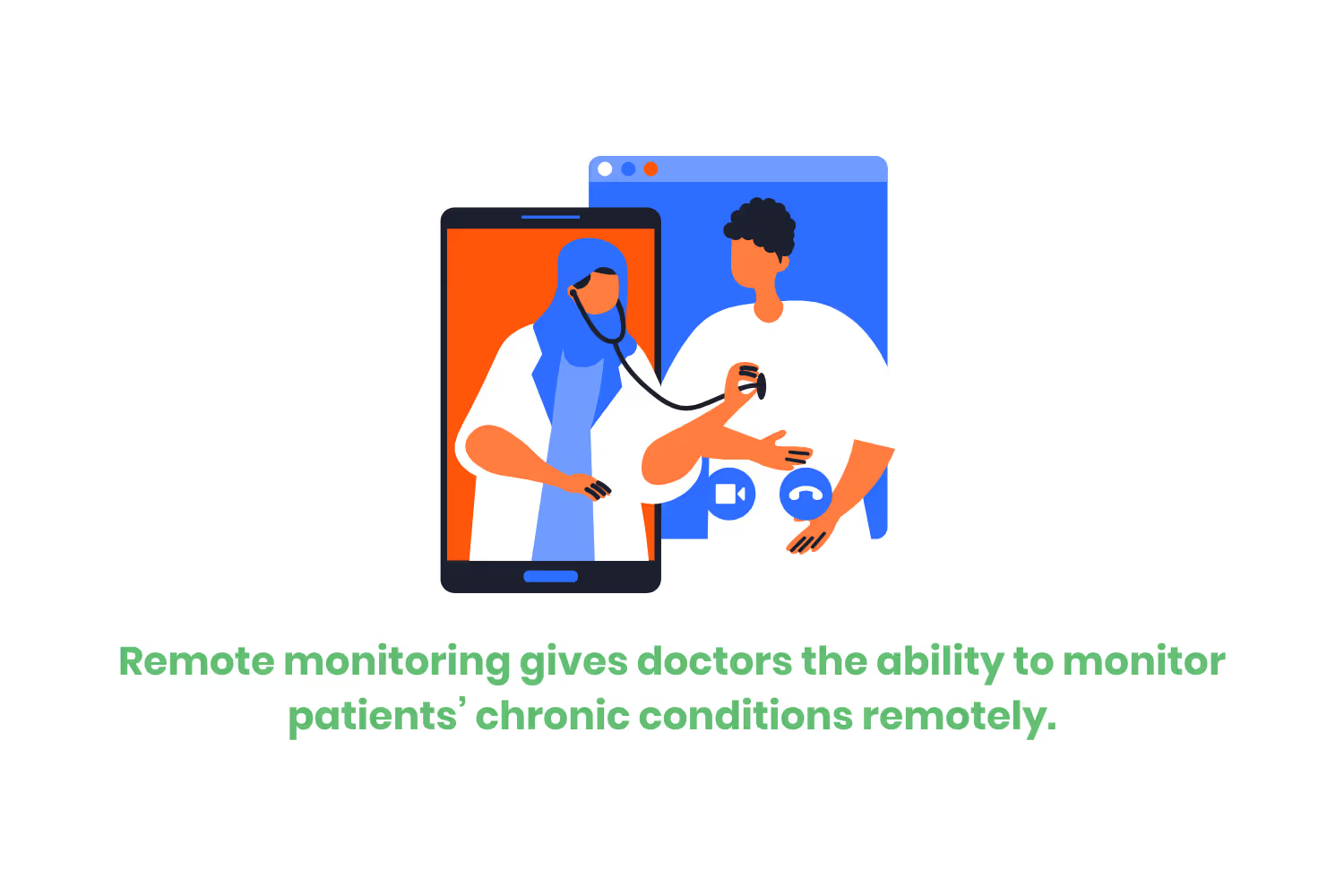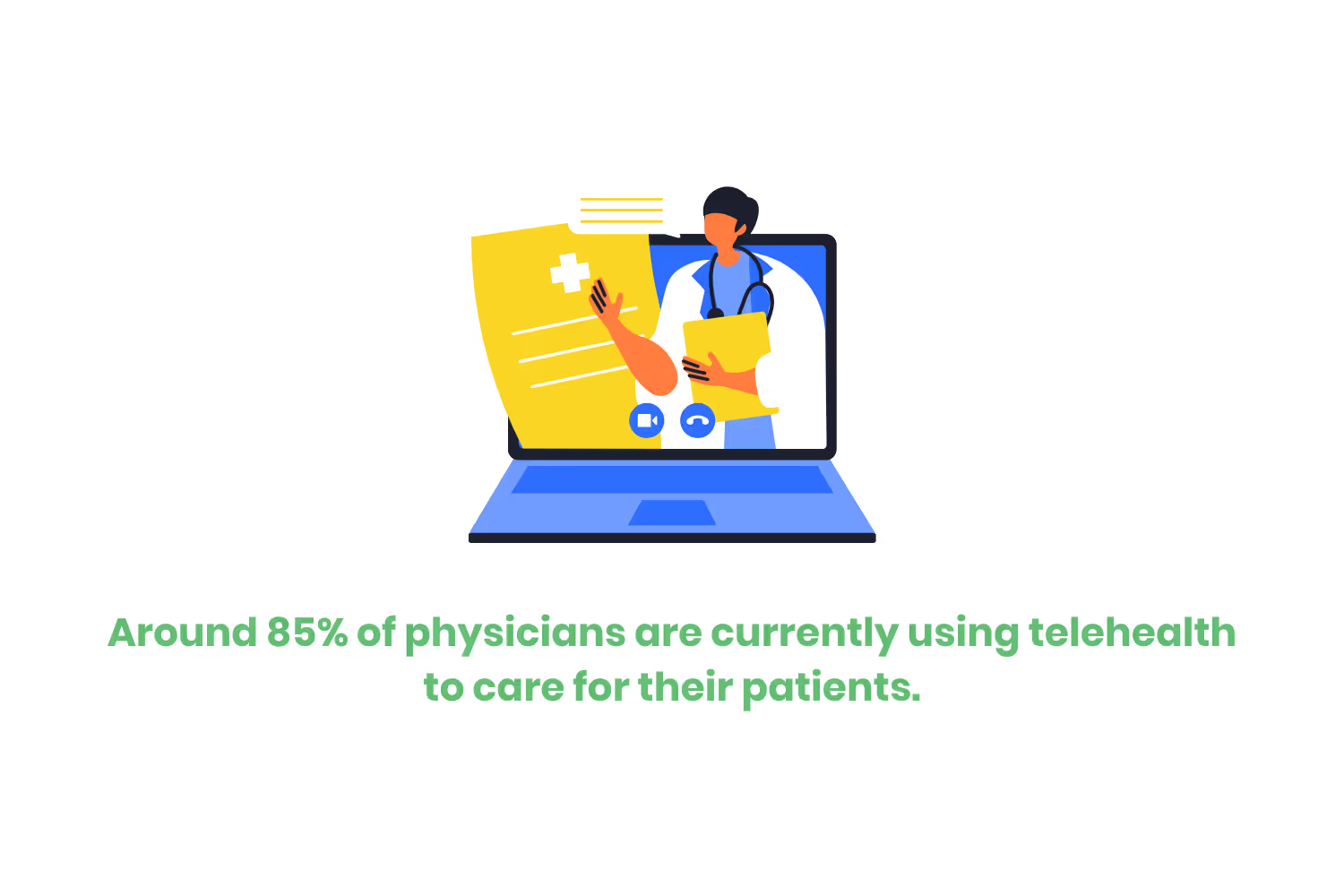[ANSWERED] What is a GT Modifier?
Let’s delve into the world of telemedicine and when to use GT modifiers.

Telemedicine, also known as telehealth, is remote medical care. It literally means “healing at a distance.”
Telemedicine uses telecommunications technology to provide services. This technology such as phone calls, video conferences, and other platforms. This is much different than a traditional in-person doctor’s visit.
Telemedicine opens the door to treating patients from the comfort of their own homes and beyond. It’s the most convenient option for portable care.
There are differences between billing for in-person services and remote services.
Healthcare providers must understand correct billing practices regarding telemedicine. Billing practices are still important to ensure accurate and timely payment for their services.

Telemedicine billing requires something called a modifier. Modifiers help distinguish a telehealth visit from an in-person visit.
Modifiers in medical billing are two-digit codes used to provide specific details about a procedure or service provided to a patient.
A GT modifier is a code used in medical billing to show administration of services through telemedicine.
This so far is quite a general overview of what a GT modifier is as well as why it’s used. Let’s delve into the world of telemedicine and when to use GT modifiers.
A History of Telemedicine
Telemedicine specifically began in the late 1950s.
The first use of it took place in 1959. Clinicians from the University of Nebraska used the technology to transmit neurological examinations across campus to medical students.
This event was the first use of real-time video communication in telemedicine around the world. Pretty cool right?
The clinicians were also able to provide additional services. Such services included long-term therapy, consultation-liaison psychiatry, and medical student training at Norfolk State Hospital.

Universities across America followed in its footsteps, leveraging telemedicine in academic settings. They used the technology to transfer medical data such as X-rays, ECGs, stethoscope sounds, and more.
We’ve come a long way since the late 1950’s. Especially since Covid-19.
The coronavirus began in December of 2019. During this time telehealth visits increased from around 5 million to more than 53 million among Medicare recipients alone. This is a significant increase.
During Covid-19 we saw an exponential rise in the number of telemedicine appointments. It’s been a little bit of time since the peak of the pandemic but we are still seeing an increase in the usage of telemedicine or telehealth.
Not only was it a safer option at the time, but people also realized the convenience of virtual appointments. If leveraged and used correctly, there are many benefits to telemedicine.
Telemedicine Benefits
There are numerous benefits to telemedicine.
Besides the obvious, remote clinical care is not the only benefit in itself of telehealth.
Yes, it’s convenient, but it also offers…
- Remote monitoring
- Patient education
- Administrative services
- Provider collaboration
Remote monitoring is a benefit of telemedicine. It gives doctors the ability to monitor patients’ chronic conditions remotely. They can view patient symptoms, vital signs, and adherence to treatment plans using these devices. This monitoring helps doctors to detect issues as they arise which helps them to provide treatment more quickly.

Patient education is accessible through telemedicine. There are platforms provided via telemedicine that help keep patients educated and informed about their well-being. Patients are also able to direct questions and concerns to their doctors via telemedicine platforms. Education and communication are the benefits of this.
Going off of communication, administrative services at your convenience are another benefit. Patients can schedule appointments and follow-ups through telemedicine. All patient information and results are in one place so patients can also view documents using telemedicine resources. Patients can also view additional comments or concerns doctors have made about their results.
Another benefit of telemedicine is provider collaboration. Doctors can easily share patient information with other doctors to get their input or feedback. This decreases waiting time for results and altogether makes the process more efficient. Platforms such as telemedicine also give patients access to a wide variety of specialists that they would not be able to see if it weren’t for technology.
Telehealth does it all.
Telemedicine Trends
A survey conducted by the American Medical Association, also known as AMA, shares with us that physicians have “enthusiastically” embraced telehealth and are expecting an increase in usage in it in the future.
Statistics from that same survey show:
Around 85% of physicians are currently using telehealth to care for their patients.
Around 70% report that their organization wants to continue using telehealth in their practice.

It’s safe to say that telemedicine isn’t going anywhere anytime soon. We can expect an increase in these percentages.
Telemedicine allows healthcare professionals to evaluate, diagnose, and treat patients from a distance. This benefit alone is especially useful for convenience, follow-up care, specialist consultations, and emergencies.
All of these services require billing. As we’ve already mentioned, in-person visits and remote visits require different billing and coding practices. Healthcare professionals must be aware of these differences. If not, you can expect claim denials and belated payment processing.
One of the biggest differences between in-person billing and remote billing is modifiers. We’re specifically talking about a GT modifier.
What is a GT Modifier?
This brings us back to our topic of “What is a GT modifier?”
In the world of medical coding, the GT modifier renders as "Via Interactive Audio and Video Telecommunications Systems.”
It’s used to indicate that telecommunication technology provides a service, such as video conferencing, rather than in-person.
The GT modifier is commonly paired with a CPT code.
A CPT code is a Current Procedural Terminology code to describe medical procedures and services.
The GT modifier + the appropriate CPT code = accurate billing and reimbursement for services!
The use of telemedicine and associated modifiers may vary based on payer guidelines.
Healthcare providers must understand and follow the specific rules and requirements of the payer they are dealing with.

The GT modifier gets applied to services that would normally be in person but are taking place remotely through telemedicine.
Some examples of when the GT modifier would apply are:
Telemedicine services such as…
- A virtual check-up or appointment
- Remote monitoring services for ongoing care
- Teleconsultations
- Behavioral health services
- Second opinions via a specialist
Two things to take into consideration if you are contemplating when to use the GT modifier are…
- The specific needs of the patient
- The type of care that is being provided to them.
It’s essential to be aware that specific billing requirements for telemedicine guidelines may vary from state to state.
The Centers for Medicare & Medicaid Services (CMS) has guidelines and regulations concerning the use of GT modifiers for further information.
GT modifiers are commonly paired with behavioral health codes and other medically appropriate services for telemedicine. They show that a virtual consultation has taken place.
Common CPT Codes That Contain GT Modifiers
Codes 99201 - 99205
Codes 99201 through 99205 refer to evaluation and management services provided by chiropractors during patient encounters. These visits require a medically appropriate history or an examination. Levels of medical decision-making may vary.
Codes 99211 - 99215
Codes 99211 through 99215 are typically used to refer to minor medical services that do not require the physical presence of a physician.
Code 90837
Code 90837 refers to a 60-minute individual psychotherapy session carried out by a licensed mental health professional.
More codes can include a GT modifier. These are just a few listed to give you an idea. When deciding whether or not to use a GT modifier, it's important to take into consideration the patient at hand’s specific needs as well as the rules and regulations that apply.
Conclusion
I hope after reading this blog you can understand more about telemedicine or telehealth as well as what a modifier is.
Telemedicine has been present and making advancements since the late 1950s. It began to quickly catch on in other areas of the United States. Organizations utilized it to transfer patient information as well as hold behavioral health appointments.
It’s been around for a bit of time now, but we didn’t see the exponential increase in telemedicine until the coronavirus outbreak.
A few years later, telemedicine is a huge trend for patients and healthcare professionals alike.
These remote visits and services have some different medical billing and coding requirements. Especially when compared to traditional in-person visits.
One of the differences is the inclusion of a GT modifier. A GT modifier is a two-digit code that’s paired with a CPT code to show that a visit was remote.
The appropriate use of a GT modifier is essential in ensuring the prompt receiving payment.
To make sure you are using a GT modifier correctly, you have to look at the specific needs of the patient as well as what type of services are being provided to them.
State regulations and qualifications vary regarding telemedicine from state to state. Thus making compliance with it that much more important.
It’s common to see GT codes paired with behavioral health codes. But they aren’t limited to just those. They also often pair with other services that are medically appropriate for telemedicine.
Telemedicine is an amazing resource in the healthcare field that offers many benefits. It’s used quite frequently. Thus, it’s important to understand proper billing practices and state regulations regarding telemedicine so that we can make sure it’s used properly.
Emphasize your product's unique features or benefits to differentiate it from competitors
In nec dictum adipiscing pharetra enim etiam scelerisque dolor purus ipsum egestas cursus vulputate arcu egestas ut eu sed mollis consectetur mattis pharetra curabitur et maecenas in mattis fames consectetur ipsum quis risus mauris aliquam ornare nisl purus at ipsum nulla accumsan consectetur vestibulum suspendisse aliquam condimentum scelerisque lacinia pellentesque vestibulum condimentum turpis ligula pharetra dictum sapien facilisis sapien at sagittis et cursus congue.
- Pharetra curabitur et maecenas in mattis fames consectetur ipsum quis risus.
- Justo urna nisi auctor consequat consectetur dolor lectus blandit.
- Eget egestas volutpat lacinia vestibulum vitae mattis hendrerit.
- Ornare elit odio tellus orci bibendum dictum id sem congue enim amet diam.
Incorporate statistics or specific numbers to highlight the effectiveness or popularity of your offering
Convallis pellentesque ullamcorper sapien sed tristique fermentum proin amet quam tincidunt feugiat vitae neque quisque odio ut pellentesque ac mauris eget lectus. Pretium arcu turpis lacus sapien sit at eu sapien duis magna nunc nibh nam non ut nibh ultrices ultrices elementum egestas enim nisl sed cursus pellentesque sit dignissim enim euismod sit et convallis sed pelis viverra quam at nisl sit pharetra enim nisl nec vestibulum posuere in volutpat sed blandit neque risus.

Use time-sensitive language to encourage immediate action, such as "Limited Time Offer
Feugiat vitae neque quisque odio ut pellentesque ac mauris eget lectus. Pretium arcu turpis lacus sapien sit at eu sapien duis magna nunc nibh nam non ut nibh ultrices ultrices elementum egestas enim nisl sed cursus pellentesque sit dignissim enim euismod sit et convallis sed pelis viverra quam at nisl sit pharetra enim nisl nec vestibulum posuere in volutpat sed blandit neque risus.
- Pharetra curabitur et maecenas in mattis fames consectetur ipsum quis risus.
- Justo urna nisi auctor consequat consectetur dolor lectus blandit.
- Eget egestas volutpat lacinia vestibulum vitae mattis hendrerit.
- Ornare elit odio tellus orci bibendum dictum id sem congue enim amet diam.
Address customer pain points directly by showing how your product solves their problems
Feugiat vitae neque quisque odio ut pellentesque ac mauris eget lectus. Pretium arcu turpis lacus sapien sit at eu sapien duis magna nunc nibh nam non ut nibh ultrices ultrices elementum egestas enim nisl sed cursus pellentesque sit dignissim enim euismod sit et convallis sed pelis viverra quam at nisl sit pharetra enim nisl nec vestibulum posuere in volutpat sed blandit neque risus.
Vel etiam vel amet aenean eget in habitasse nunc duis tellus sem turpis risus aliquam ac volutpat tellus eu faucibus ullamcorper.
Tailor titles to your ideal customer segment using phrases like "Designed for Busy Professionals
Sed pretium id nibh id sit felis vitae volutpat volutpat adipiscing at sodales neque lectus mi phasellus commodo at elit suspendisse ornare faucibus lectus purus viverra in nec aliquet commodo et sed sed nisi tempor mi pellentesque arcu viverra pretium duis enim vulputate dignissim etiam ultrices vitae neque urna proin nibh diam turpis augue lacus.



![[ANSWERED] What is a Long-Term Care (LTC) Pharmacy](https://cdn.prod.website-files.com/67e2b8210878abcba6f91ae6/68d687806a075a1cf64659b0_WhatisLongTermCarePharmacy_925.avif)
